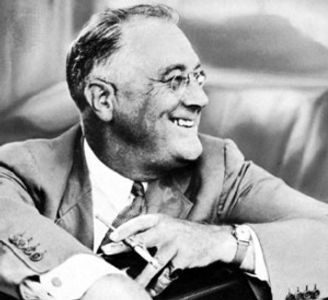Unjust enrichment at auction?
- Mike Brandly, Auctioneer

- Mar 18, 2011
- 3 min read

It seems every so often a story makes the news such as this:
The buyer found over $40,000 in $100 bills taped under the third drawer of the mahogany chest he recently purchased at auction. Quite a find considering he only paid $175 for the chest.
In cases such as the aforementioned, what apparently occurs is an item such as a chest of drawers is offered at auction. The buyer takes the chest home, where he finds money, diamonds, or other items of value inside the chest. The issue then involves, does the buyer have title to the money, diamonds or whatever else was inside the chest of drawers, or just the chest of drawers itself?
Of course, the item being sold could be one of a wide variety of items, such as a car, virtually any type of furniture, clothing, boxes, cabinets, or even real property — where other items of value could be hidden from view. The property sells, and the buyer is enriched beyond the market price paid.
Let’s change our story slightly:
The buyer purchased a mahogany chest at auction. The next day, he found out that the chest was once owned by President Franklin D. Roosevelt, and is worth upwards of $40,000. Quite a find considering he only paid $175 for the chest.
In cases such as this, the property itself is sold at auction which is identified later to be worth much more than the market price paid.
While these may be two different legal cases, both may qualify for evaluation under what are considered “unjust enrichment” precedent. In courts in the United States, unjust enrichment cases often award restitution to a claimant who is impoverished at the expense of the defendant’s unjust enrichment.
Unjust enrichment cases in the United States often follow this path of claim:
Was the defendant enriched?
Was the expense at the expense of the claimant?
Was the enrichment unjust?
Does the defendant have a defense?
Is there a reasonable expectation of compensation?
Let’s look at these five stages with our two examples above.
Was the defendant enriched? In both our case of $40,000 inside the chest of drawers, and finding the chest is worth $40,000, qualify under this first stage. Clearly, the defendant is enriched beyond his purchase price of $175.
Was the enrichment at the expense of the claimant? In both our case of $40,000 inside the chest of drawers, and finding the chest is worth $40,000, qualify under this second stage. Clearly, the defendant is enriched at the expense of the claimant.
Was the enrichment unjust? This stage is where our cases diverge. For the $40,000 cash found in the chest of drawers, it may well be that this is unjust. However, for the chest of drawers itself to be worth $40,000, probably not.
Does the defendant have a defense? Here again, our cases may be different in this regard. For the $40,000 cash found, the defense would have to be that the auctioneer said, “You’re buying the chest of drawers, and anything in it.” For the chest of drawers itself, the defense is rather academic — “The auctioneer offered the chest of drawers for auction, and I was the high bidder.”
Is there a reasonable expectation of compensation? At an auction, especially if the property is being sold “as-is and where is” there likely is not any rightful expectation of compensation. The buyer purchasing “as-is” is taking title for better or worse.
What remedies are available to the claimant? For either of our cases here, the seller may have a legitimate case against the auctioneer who didn’t, “find the $40,000 inside the chest of drawers,” or “correctly identify and market Roosevelt’s chest of drawers.” It is important to note that in either case, if the auctioneer acted “reasonably,” then such a claim would be difficult.
It is likely that generally speaking, the case of a chest of drawers containing $40,000 in cash may well result in the defendant’s obligation to make restitution to the claimant unless sold “as-is.” However, in the case of the chest of drawers itself being worth $40,000, such restitution (or compensation), if any, would have to come from the auctioneer rather than the buyer.
Mike Brandly, Auctioneer, CAI, AARE has been an auctioneer and certified appraiser for over 30 years. His company’s auctions are located at: Mike Brandly, Auctioneer, Keller Williams Auctions and Goodwill Columbus Car Auction. His Facebook page is: www.facebook.com/mbauctioneer. He serves as Adjunct Faculty at Columbus State Community College and is Executive Director of The Ohio Auction School.




Comments